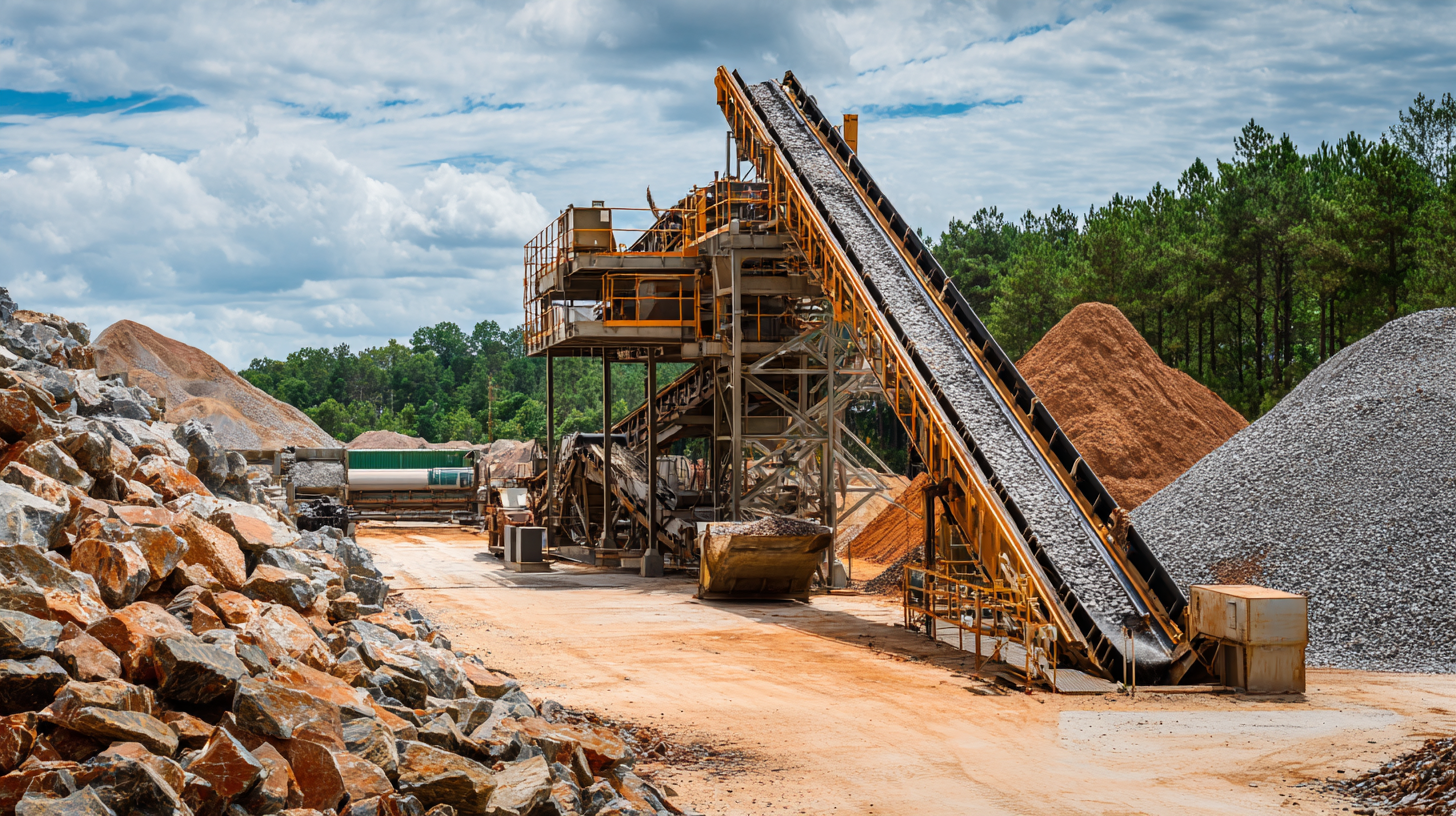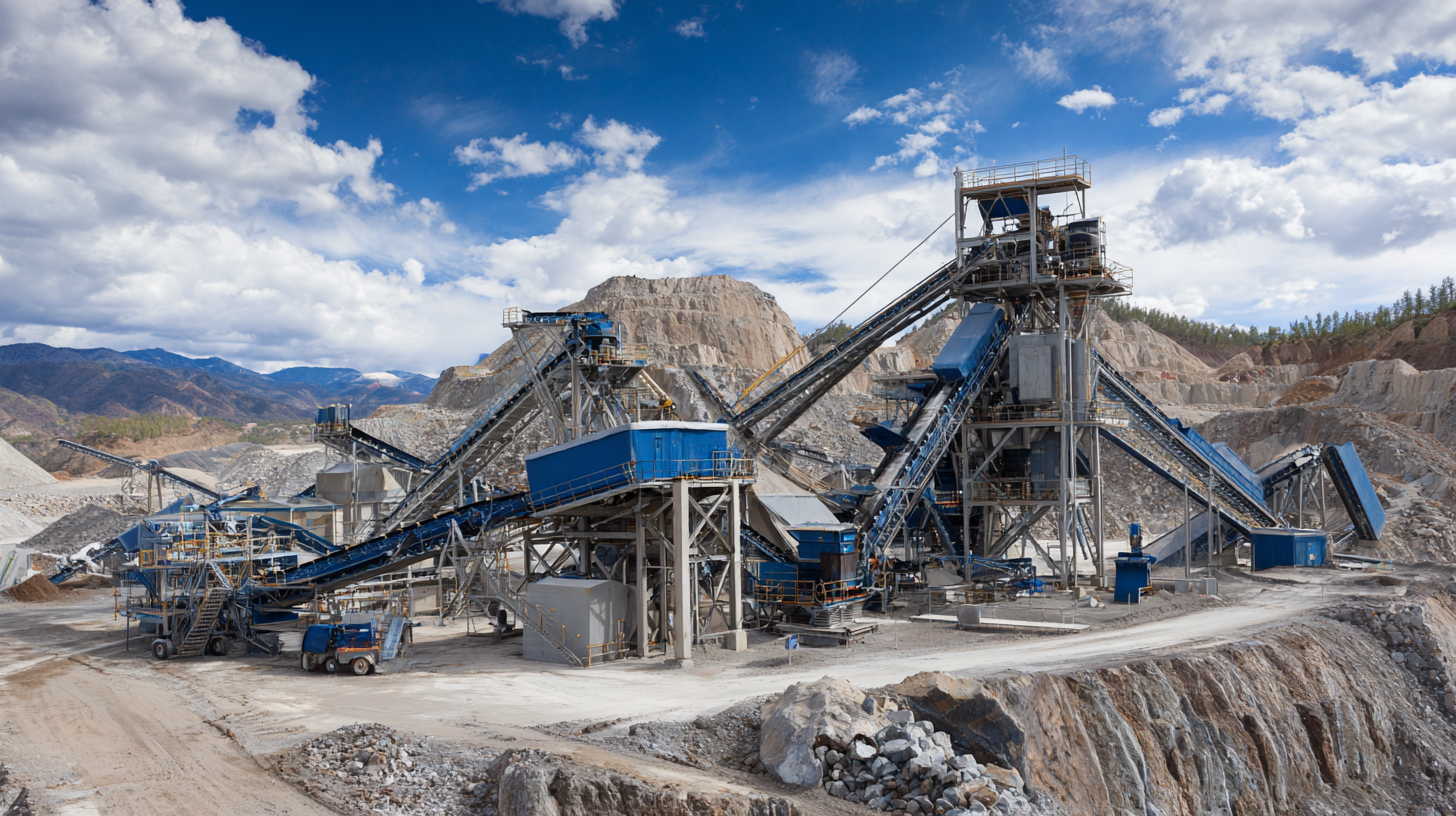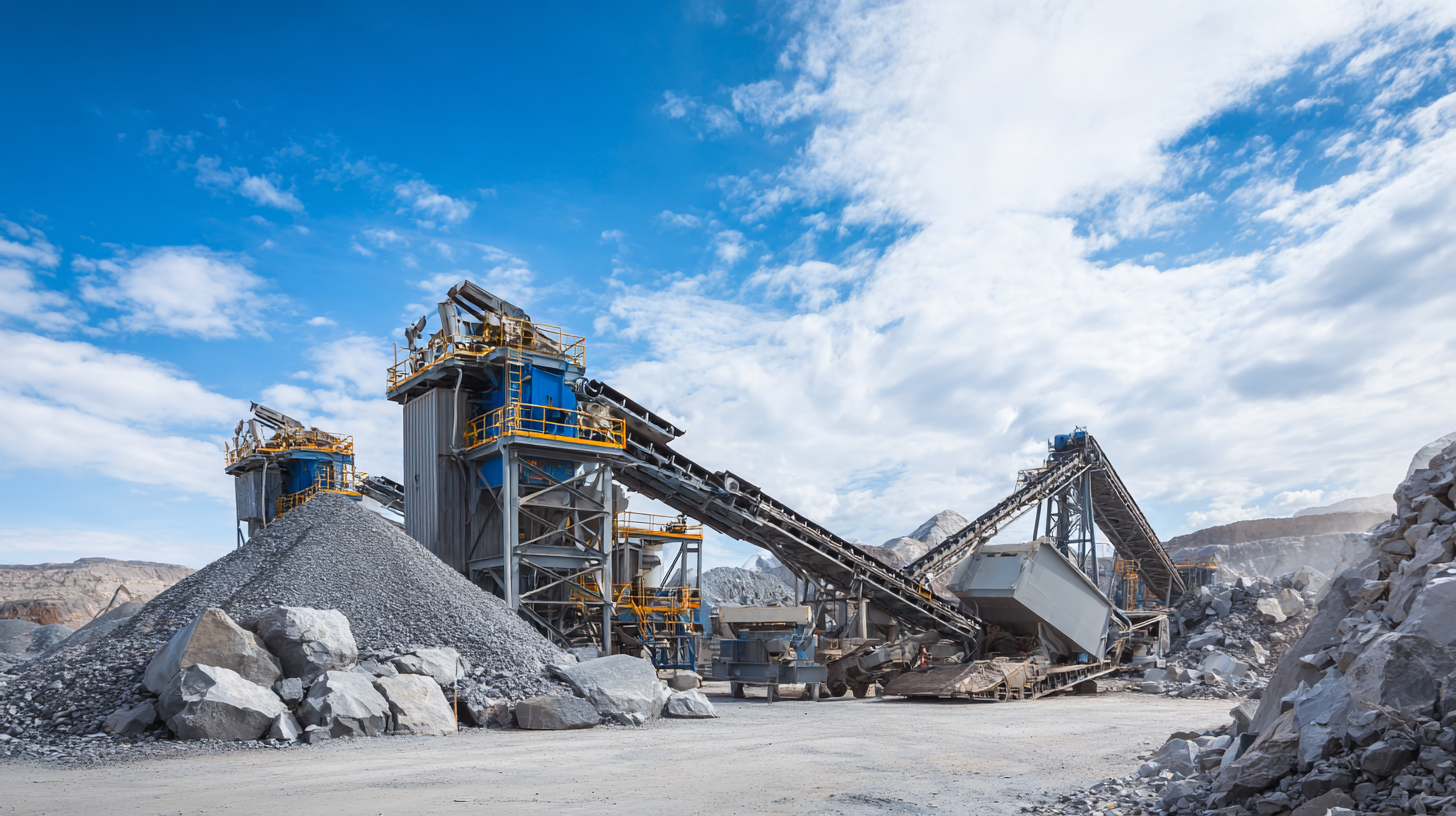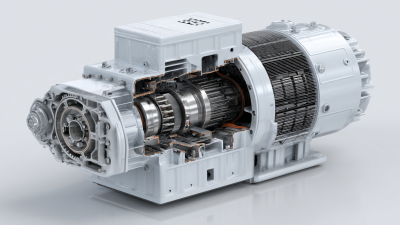In the mining and aggregate industries, the efficiency of machinery plays a pivotal role in overall productivity and profitability. According to a recent report by Grand View Research, the global cone crusher market is expected to reach USD 2.4 billion by 2028, growing at a compound annual growth rate (CAGR) of 5.8% during the forecast period. This growth underscores the importance of optimizing the performance of cone crushers, which are crucial for secondary and tertiary crushing processes. By implementing strategic operational practices and maintenance routines, companies can enhance the efficiency of their cone crushers, reduce operational costs, and extend equipment lifespan.

This article presents seven essential tips aimed at maximizing the efficiency of cone crushers, ensuring that each unit operates at its optimal capacity while delivering high-quality material output in a cost-effective manner.
When it comes to maximizing the throughput of your cone crusher, understanding the optimal feed size is crucial. The feed size significantly impacts the efficiency and performance of the crushing process. A well-optimized feed size not only enhances the crushing dynamics but also ensures that the machine operates smoothly without unnecessary strain. Selecting the appropriate size helps in achieving a uniform flow of material and reduces the chances of overloading, which can lead to premature wear or failure.
To improve your cone crusher's performance, consider the following tips. First, ensure your material is consistently screened to remove any oversize particles before it enters the crusher. This helps maintain the desired feed size and prevents damage to the equipment. Additionally, monitor the feed rate; an overly high feed rate can result in blockages and reduced efficiency. Lastly, implement a feedback system that tracks production and material properties so you can make informed adjustments to maintain optimal conditions for crushing. These practices, when applied diligently, can lead to a significant boost in your cone crusher's throughput.
| Tip Number | Tip Description | Recommended Feed Size (inches) | Expected Throughput (tons/hour) |
|---|---|---|---|
| 1 | Optimize Feed Size | 3-4 | 150 |
| 2 | Maintain Proper Lubrication | 2-3 | 140 |
| 3 | Regular Maintenance Checks | 1-2 | 130 |
| 4 | Use Proper Settings | 4-5 | 160 |
| 5 | Monitor Power Usage | 2-4 | 100 |
| 6 | Utilize Automation Technology | 3-5 | 175 |
| 7 | Ensure Proper Training for Operators | All Sizes | Variable |
When it comes to maximizing the efficiency of your cone crusher, understanding efficiency metrics is vital. Analyzing power consumption relative to output ratios can provide significant insights into operational performance. According to the Mining and Minerals Processing report from 2022, effective cone crushers can achieve a power consumption rate as low as 0.5 kWh per ton of processed material, significantly improving the economic viability of operations. This metric becomes particularly relevant when evaluating the balance between energy costs and operational throughput.
Moreover, the output ratio, which typically involves comparing the weight of crushed material to the energy input, is crucial for optimizing plant performance. A well-calibrated cone crusher can produce an output ratio of approximately 6:1, meaning that for every ton of stone input, six tons of crushed output are generated. The ongoing advancements in technology, including the integration of smart sensors and data analytics tools, enable operators to monitor these metrics in real-time, further enhancing operational efficiency. By focusing on power consumption and output ratios, operators can not only enhance productivity but also minimize operational costs significantly.

When it comes to maximizing the efficiency of your cone crusher, implementing effective maintenance strategies is crucial.
Preventive maintenance not only helps in prolonging the lifespan of the equipment but also plays a significant role in reducing downtime by up to 20%. Regular inspections of wear parts, such as liners and mantles, can identify issues before they escalate into major problems. Keeping the crushing chamber clean and free of debris also ensures that the machine operates optimally, allowing for smooth production processes.
Another important aspect of preventive maintenance is monitoring the lubrication system. Proper lubrication prevents excess wear and tear, ensuring that the moving parts function seamlessly. Scheduling routine maintenance checks can help identify potential leaks or failures in the lubrication system, thus avoiding unexpected breakdowns. Additionally, establishing a timeline for replacing wear components before they reach critical wear levels is essential. By proactively addressing these aspects, operators can maintain consistent performance and reduce unexpected downtimes, ultimately leading to higher productivity in crushing operations.
The selection of appropriate materials significantly influences the efficiency and effectiveness of cone crushers. According to a report by the Mining and Materials Research Institute, the size and hardness of the material being processed can dictate the fragmentation outcome, which ultimately impacts the crusher's performance. For instance, harder materials may require a reduction in feed rate to optimize throughput, as excessive strain can lead to increased wear on the crusher components.
Furthermore, the fragmentation of materials plays a critical role in the overall efficiency of the crushing process. A study by the International Journal of Mineral Processing revealed that materials with optimal size distribution can enhance the energy efficiency of the crusher by up to 30%. This underscores the importance of pre-screening materials before feeding them into the cone crusher, ensuring that the optimal material size is being processed, thereby maximizing productivity and reducing operational costs. By understanding the interplay between material selection and fragmentation, operators can significantly improve the performance of their cone crushers.

Utilizing real-time data monitoring techniques can significantly enhance the operational efficiency of cone crushers, much like the advancements seen in other industries through smart technology integration. By embracing Industry 4.0 principles, cone crusher operators can implement remote monitoring systems to collect vital operational data, track performance metrics, and identify potential defects before they escalate into costly downtimes. The equivalent of using smart additive manufacturing’s defect detection can be applied here: consistent monitoring can lead to significant material savings and operational improvements.
Moreover, the power of big data analytics can be harnessed within the realm of cone crushers. Predictive maintenance driven by real-time data analytics allows for deeper insights into machinery performance, similar to innovations in industrial IoT networks. As dynamic conditions and device variability present challenges, leveraging machine learning can optimize maintenance schedules, ensuring that crushers operate at peak efficiency. Just as innovative monitoring solutions have enhanced environmental sustainability in quarry operations, integrating IoT-enabled technologies in cone crusher management can pave the way for improved productivity and resource utilization.






